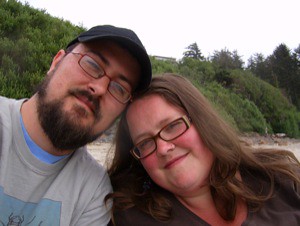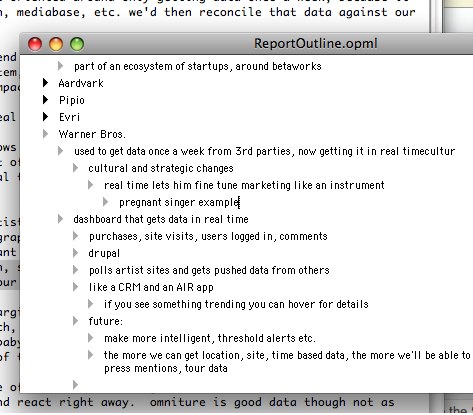Well folks, I turn 33 years old on Monday but I’m going to have to work so I’m celebrating it today. It’s been a very big year for me: I got married and bought a house! There’s a picture of my new backyard there below. I love our new house! And I love my wife, very much. A lot of other things happened but those are the biggest. It’s been a great year for work as well, I’m learning a lot and having a lot of fun at ReadWriteWeb.

What more could a lucky guy like me want for my birthday? (Less hair loss, dogs that walk themselves, college loans paid off, I could go on!) I’ll tell you what I really need – OPML files! Bundles of RSS feeds I can import into my feed reader. My old Google Reader account is way too filled up with gadget blogs and other things I don’t care about anymore and I haven’t subscribed to anything that isn’t a tech company’s official blog in months. It’s not right. So I’m starting with a fresh new start, using the Mac desktop reader Vienna.
 So far the only thing I’ve put into the reader is the OPML file of hundreds of women tech bloggers put together by Anne Zelenka almost three years ago! (Check out that post if you want to see how cutely naive my writing about OPML was just 3 years ago!) That’s my wife with me on the right, not Anne Zelenka.
So far the only thing I’ve put into the reader is the OPML file of hundreds of women tech bloggers put together by Anne Zelenka almost three years ago! (Check out that post if you want to see how cutely naive my writing about OPML was just 3 years ago!) That’s my wife with me on the right, not Anne Zelenka.
That’s cool, but I’d love it if for my birthday you, my friends, would send me OPML files of blogs on certain topics. Something cool. I don’t need a file of the top blogs writing about the Semantic Web, I already have that. I don’t need a file of the best blogs on youth marketing, I already have that and am not sure how I feel about it.
This shouldn’t be too hard to do, if you’re unfamiliar. Just put a collection of feeds into a folder in any RSS reader and then export. Open it up in a text editor and cut out all the parts outside of that folder. Then send it to me! Or you could drop RSS feeds in this tool, publish, copy and paste into a text editor and send it to me via marshall@marshallk.com
It would be so awesome if, for my birthday, a few people sent me really awesome OPML files. It’s a curated collection of dynamic sources – a gift that really keeps on giving!
Update: It’s working! People are sending me awesome collections of blogs on things like Activity Streams data standards, web design, crafts and more. Thank you so much!!
Do this for me and I’ll build you a really awesome TweepML group for your birthday when the time comes.
What do you think? Think anyone will actually do it and send me one?? We’ll see! Even if no one does, I still got married and bought a house this year – so no big deal!

![Reblog this post [with Zemanta]](http://img.zemanta.com/reblog_e.png?x-id=82b12969-b02e-4792-a9f1-8ba438f92534)